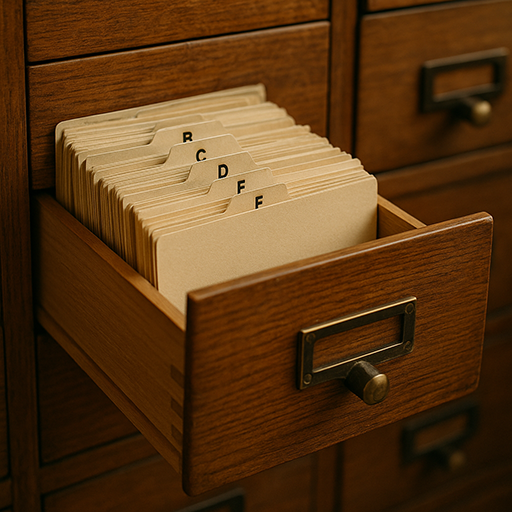What Is The Slipbox Method?

If you’ve ever felt overwhelmed by information—books you’ve read, podcasts you’ve listened to, or ideas that hit you while walking the dog—you’re not alone. The issue isn’t that you’re forgetful; it’s that the human brain excels at processing, not storing, information.
Enter the Slipbox Method: a durable, low-tech system for capturing ideas on paper, interlinking them, and letting them mature into publishable insights.
The Core Idea
One idea → One card → One unique address → Many connections.
Each note is written on its own index card (or slip). You assign the card a unique ID, then link it to any related cards already in the box. Over time, the box becomes a dense web of cross-referenced thoughts—your “paper brain.”
A Quick Historical Detour
Niklas Luhmann (1927–1998), a German sociologist stuck in a dull civil-service job, began keeping such a note system in the 1950s. By the time he died, his Zettelkasten (German for “slip-box”) held 90,000+ cards and underpinned more than 70 books and 400 papers. He famously claimed he never started with a blank page; the slipbox wrote back to him.
Why It Still Works in 2025
-
Atomic notes – Each card holds one idea, preventing bloated, ambiguous entries.
-
Contextual links – Numbering and backlinks let related thoughts “talk” to each other.
-
Cumulative insight – You revisit and connect old ideas instead of rewriting or forgetting them.
-
Medium friction – Writing by hand forces reflection; the intentional pace is a feature, not a bug.
Visual Tour (Description Only)
Imagine a drawer filled with index cards, each labeled with a unique number. Cards are linked using references to other card numbers. The structure grows organically—branching off like a tree of thoughts.
Another way to picture it: you capture fleeting ideas, refine them into literature notes (taken from books/articles), then distill those into permanent notes. These are numbered, filed, and connected into your slipbox.
What the Slipbox Method Is Not
-
A glorified to-do list
-
A “second brain” app dependency
-
A speed-reading or memorization hack
It is a thinking system—a quiet daily ritual that compounds knowledge.
Step-by-Step Guide
Step 1: Capture fleeting notes. Use any scrap; transfer within 24 hours.
Step 2: Create literature notes. Summarize what matters, in your own words.
Step 3: Write permanent notes. One idea per card, written clearly.
Step 4: Assign an ID and link it to related cards.
Step 5: File it into the slipbox.
Final Thoughts
The Slipbox Method is a commitment—but a rewarding one. Card by card, you build a conversation partner that never forgets and never runs out of battery. It’s analog in execution, yet timeless in advantage.
Ready to start? Grab a stack of index cards, a pen, and let the box do the thinking.
References
-
Luhmann, N. Communicating with Slip Boxes: An Empirical Account. Bielefeld University Press, 1992.
-
Ahrens, S. How to Take Smart Notes. CreateSpace, 2017.
